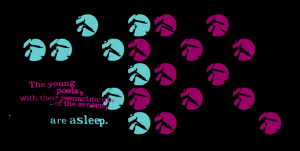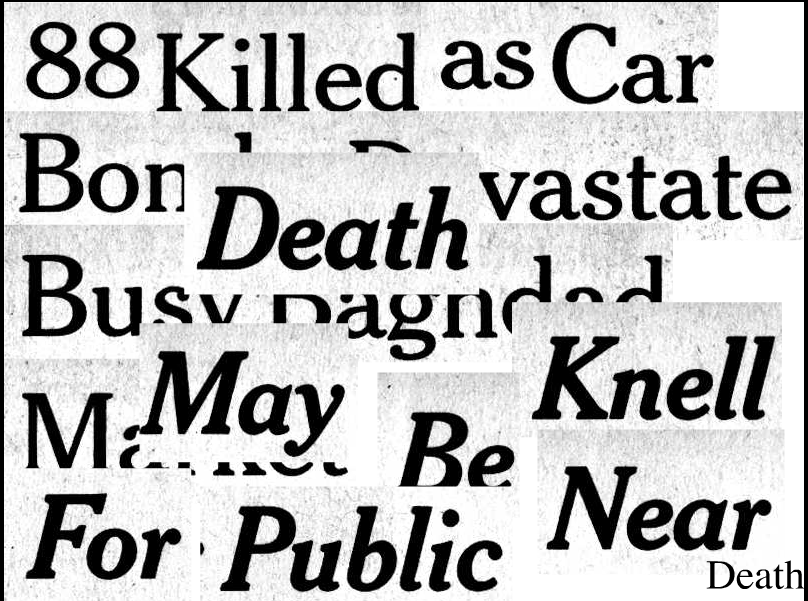Rememori is an online matching game/interactive poem which deals with the degeneration of the brain in the face of Alzheimer’s Disease. For each level, the player is able to choose an avatar from a list of users ranging across the spectrum of intimacy from “Father” to “Doctor” to “Stranger”. The player’s choice of avatar will affect the text generated during gameplay. The actual body of the game is a memory game involving matching pairs of cards with identical images. Everything is neurological in nature, either depicting the anatomy of the brain, or embodying an idea which the sick character must struggle to hold on to.
In “Electronic Literature: New Horizons For the Literary”, Katherine Hayles describes electronic literature as “a hopeful monster… composed of parts taken from diverse traditions that may not always fit neatly together” (Hayles 2008). Rememori is unquestionably a hopeful monster, though a highly successful one. It utilizes a combination of poetry, hypertext, gaming and moving art to present the player with a compelling depiction of Alzheimer’s disease which the player must experience firsthand. For simplicity’s sake I will refer to Rememori as a game, although to be more precise it is a piece of electronic literature without a clear genre.
The “poetic” portions of Rememori meet with Hayles definition of hypertext as text “characterized by linking structures” (Hayles 2008). Each click will produce a randomly selected piece of text which floats in the air for a few seconds. These components do not blend seamlessly with the gaming portions of the piece, but the dissonance between the hypertext and the gaming serve to make each as impactful as possible. If the player is playing the matching game in earnest, then this sea of disembodied phrases should barely register, acting initially as an emotional backdrop to the task of matching images. Of course, once the player recognizes the thematic importance of the text, the text explicitly distracts the player from the goal of completing the level, since completing the level means being unable to read more of the text. The disjunct nature of the text and images ensures that together they will always present the player with a chaotic blend of ideas that mirrors the fragmented nature of actual thoughts, particularly those in the disordered brain. With each advancing level, the interface incorporates multiple methods to portray degeneration of the mind. The card placement becomes more erratic, the images more volatile, the phrases less complex. In conjunction with one another, these components form an intuitive shorthand for the state of the mind at different stages of the disease and allow the player not only to understand it, but to feel it for himself.
Rememori is very effective as a game because it is based around forcing the player to experience distorted version of the familiar. Most people have played a memory game at some point in their lives. Even if they have not, the first level presents a very typical version of the classic matching game for the player to become acquainted with. Fragments of text appear with every upturned card, but this is otherwise a very ordered game. Of course this cannot last. The impact of each subsequent level is built upon its ability to distort the norms of the previous one. The second level has the images shake and turn. The third replaces images with questions. By the fifth level, the screen is a disorganized mess of misspelled words, poorly drawn clocks, and unanswered questions. These levels are not just visually jarring, they are more frustrating to play after having learned to play the game with more simple structure. Rememori is powerful because it mimics the experience of neurological disease by taking the familiar and turning it into something noticeably distorted.
The game is especially poignant in that it gives the player a small amount of choice, only to steadily remove that choice near the end of the game. Users begin to blend together as relationships lose meaning, cards become blank as thoughts fall apart. Nothing the player does really matters once the sixth level is begun. The player can make the arbitrary distinction between “Stranger” and “Visitor”, but in either case there is nothing left to do but click each circle one last time and watch the brain fade away. In the same way, life is sometimes unfair, uncompromising, and unwilling to wait. When a degenerative disease takes hold, one can no longer hold back the inevitable just by wanting more time. At some point, it is necessary to simply let go.
The final portion of the game, seeing the brain turn to white and fade away, is oddly serene after the more blunt, garrish imagery of the levels preceding it. The cross-sections of brains and jumbled misspellings of words are very agitating images for the player to be bombarded with. The plain white circles, while disturbing on an existential level, are in contrast very placid, allowing the game to end on a less violent note. And after feeling the frustration that comes from struggling to make sense of once simple concepts, I felt oddly calm when I resigned myself to the fact that oblivion was the only outcome. By removing the player’s ability to struggle back, the game forces the player into acceptance of the inevitable, which could prove very cathartic for players coming to grips with the effects of Alzheimer’s Disease.
At its core, Rememori is a meditation on death and loss. Things that we take for granted now – order, identity, continuity – may soon be gone. We may lose something that we didn’t even need a name for until we had to describe the world without it. The internal mechanisms of the mind are difficult to conceptualize and even harder to convey, which is what makes Rememori so clever for finding a clear “language of the mind” through which to communicate with the player. As a game built around random elements, it has no well-defined message, but its emotional tone and impactful finale are unavoidable. It is a rare game that wants to be ruminated on far more than to be played.






